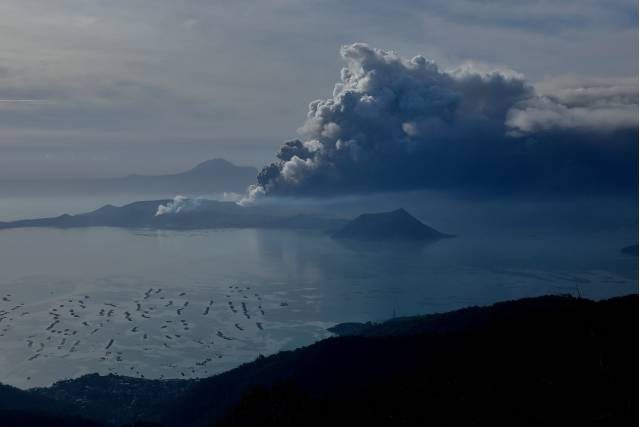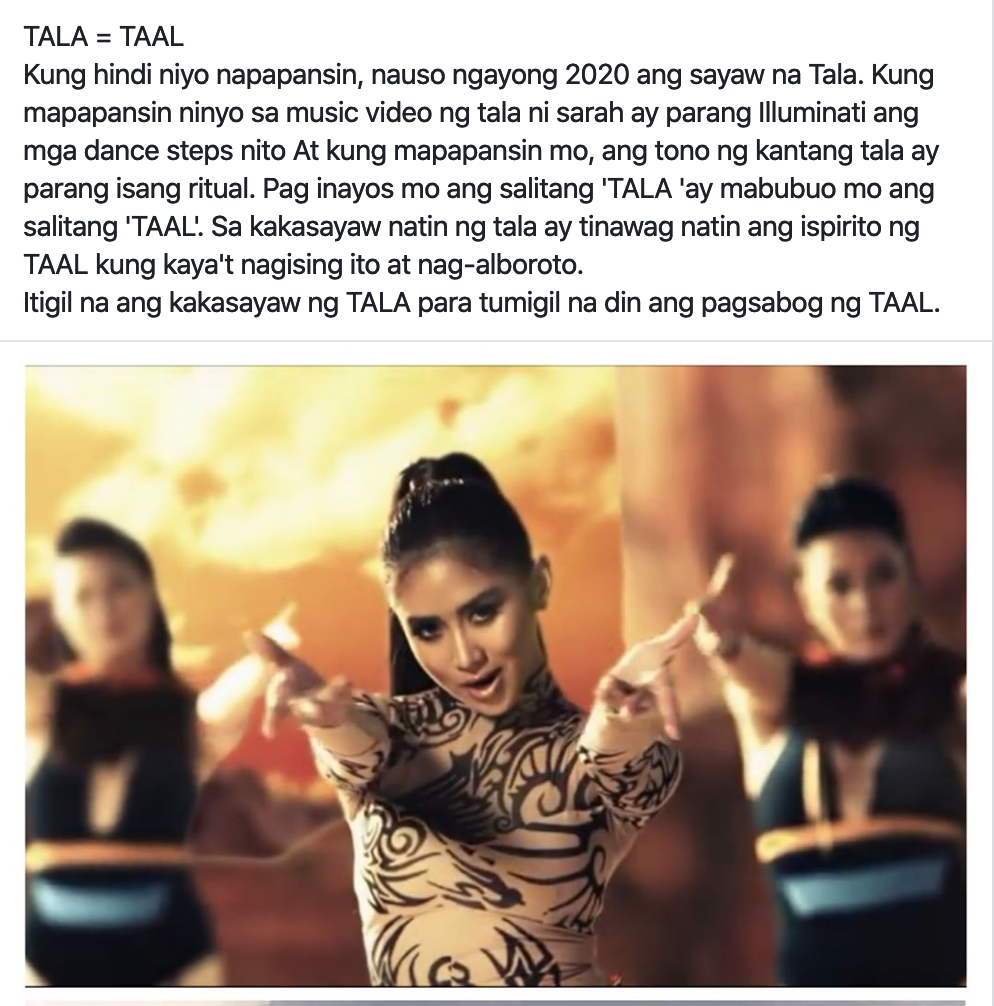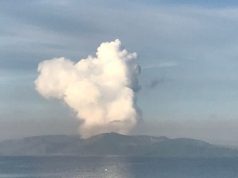
Filipinos appealed to social media users to refrain from creating jokes and false information about Taal Volcano and connecting it with Sarah Geronimo’s trending dance craze “Tala.”
A certain post on Facebook, which has gone viral, claims that the dance craze has supposedly summoned the so-called spirit of Taal, hence its continuous unrest.
The poster claimed that “Tala’s” dance steps in the music video are related to the “Illuminati” while its tone appears to sound like a “ritual.”
RELATED: Sarah Geronimo’s ‘Tala’ became an online dance challenge during the holidays
“‘Pag inayos mo ang salitang ‘TALA ‘ay mabubuo mo ang salitang ‘TAAL’. Sa kakasayaw natin ng Tala ay tinawag natin ang ispirito ng TAAL kung kaya’t nagising ito at nag-alboroto. Itigil na ang kasasaya ng TALA para tumigil na din ang pagsabog ng TAAL,” the status said.

Filipinos immediately debunked the claim and pointed out that no one is supposed to be blamed for a natural occurrence.
“Taal Volcano. It’s eruption. The ashfall. This catastrophe is not a joke,” a Facebook user said.
Another social media user appealed to the public to post “only the most important and relevant tweets” about the volcano to help those who are especially affected by the eruption.
Good evening, everyone!
Please refrain from flooding the Philippine trends with Taal jokes and other unnecessary tweets. Let's help everyone, especially those living near Taal, stay updated with only the most important and relevant tweets regarding Taal's current situation.
— Johnkimverlu (@ronaldgem) January 12, 2020
Volcanoes erupt when magma or molten rock rises to the surface or the crater. It also erupts when water underneath the surface interacts with hot magma which in turn creates steam, BBC notes.
Eruptions are in no way related to human interest activities such as dancing.
Taal Volcano is one of the most active volcanoes in the country that has seen frequent eruptions over the past decades, according to reports.
It is currently on Alert Level 4 which means that “hazardous eruption is possible within days.”
This status indicates “intense unrest, continuing seismic swarms, including harmonic tremor and/or ‘low frequency earthquakes” and “profuse steaming along existing and perhaps new vents and fissures.”
The Batangas-based volcano initially erupted on the afternoon of January 12, Sunday and has since been on a state of heightened unrest.
The public is advised to wear N95-grade face masks or other alternatives that can protect their eyes and nose from the ashfall emitted by the ongoing eruption.









